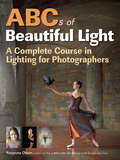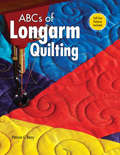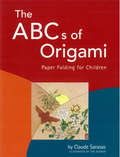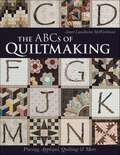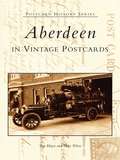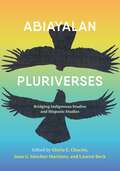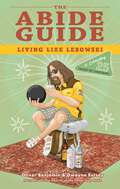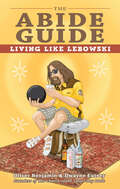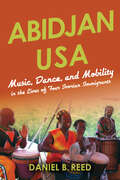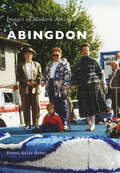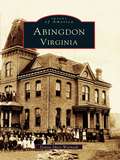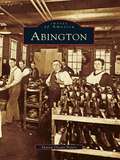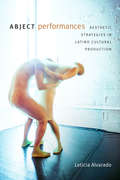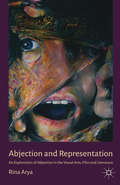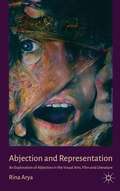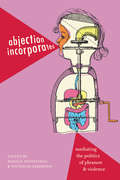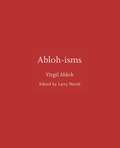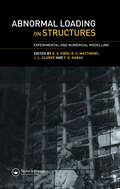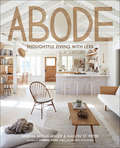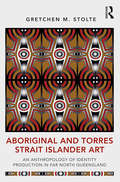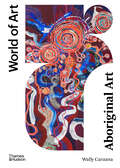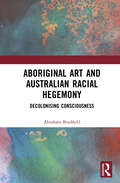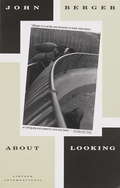- Table View
- List View
ABCs of Beautiful Light
by Rosanne Olson"Light is a language, it takes practice to become fluent". This is the premise of the ABCs of Beautiful Light. In this book, Rosanne Olson presents lessons and insight from her many years both in the photographic industry and as a teacher. These are time-tested techniques that leave her clients and students pleased time and time again. Presented in a format that allows the reader to progress at their own pace, this book is sure to leave a lasting impact on any photographer who dives in. The book begins with the fundamentals of photography. Olson leads the reader through the basic functions of the camera, from metering & exposure, to the uses of the digital files and how to manage them. Laying out this groundwork puts the reader in the right position to proceed with the lessons in the book. From there, the importance and concepts of design are explained. While the book focuses on lighting, the understanding of design is essential to creating compelling, memorable photos.
ABCs of Beautiful Light
by Rosanne OlsonEverything we see is lit by one source or another. The questions are: what and how? That is what this book is designed to teach you. Through Roseanne Olson's tried-and-true course on lighting principles for photography, video, and art in general, you will discover how the angles and heights of your light sources affect your pictures. You will learn how to work with light modifiers to change the quality of your light, and how to control light to create a feeling of depth and dimension--whether you're shooting with natural light, continuous artificial light, studio strobes, dedicated flash, or a combination of sources. Assignments are included to help you put each concept into practice as you perfect your skills and train your eyes to see the subtleties of light. You will never look at a photograph or painting in the same way after you read this book!
ABCs of Longarm Quilting
by Patricia C. BarryWhether you favor precise plans and extensive details, or thorough concepts demonstrated via illustrations, everyone can learn from this diverse tutorial. This comprehensive long-arm quilting guide: Explains capabilities and generalities of long-arm machines Demonstrates basic techniques using pantographs and free-hand quilting Includes four projects and two patterns
The ABC's of Origami
by Claude SarasasArranged in the traditional A-B-C book sequence, this charming book displays a key word in English along with an origami exercise with easy-to-follow diagrams on each page. This is an ideal gift book for children.
The ABC's of Origami
by Claude SarasasArranged in the traditional A-B-C book sequence, this charming book displays a key word in English along with an origami exercise with easy-to-follow diagrams on each page. This is an ideal gift book for children.
The ABCs of Quiltmaking: Piecing, Appliqué, Quilting & More
by Janet Lundholm McWorkmanA primer for quilting techniques Quilting school is now in session, and it’s never been so fun to hit the books! Take the challenge to move beyond basic patchwork with 12 skill-building lessons, including paper piecing, strip piecing, bargello, set-in seams, appliqué, crazy quilting, and more. Learn the tools, terms, and techniques that are the bedrocks of quiltmaking. Use your new skills to finish a gorgeous final exam, an ABC-themed sampler quilt, plus a handful of quick-finish projects. It’s a complete quilting course in one book. - Grow as a quilter! 12 lessons from curves to paper piecing, Y-seams, appliqué, and more - Timeless alphabet quilt pattern that incorporates all techniques, plus smaller projects - Expand your craft with this complete quilting course in one book
Aberdeen in Vintage Postcards (Postcard History)
by Tom Hayes Mike WiesePlotted and planned as a crossroads town along the developing Milwaukee Railroad, Aberdeen, South Dakota was first settled in 1881. With the arrival of the railroad in 1882, Aberdeen flourished. It earned the nickname of Hub City, serving as a railroad junction and agricultural center. Aberdeen's ability to adapt to a changing economy has led to steady growth and has made it the third largest city in the state.Using more than 200 images, authors Tom Hayes and Mike Wiese take the reader on a historic tour of Aberdeen. Drawing on their immense postcard collection, they tell the story of this tight-knit community and the incredible people who are an integral part of its history.
Abiayalan Pluriverses: Bridging Indigenous Studies and Hispanic Studies
by Gloria ChacónAbiayalan Pluriverses: Bridging Indigenous Studies and Hispanic Studies looks for pathways that better connect two often siloed disciplines. This edited collection brings together different disciplinary experiences and perspectives to this objective, weaving together researchers, artists, instructors, and authors who have found ways of bridging Indigenous and Hispanic studies through trans-Indigenous reading methods, intercultural dialogues, and reflections on translation and epistemology. Each chapter brings rich context that bears on some aspect of the Indigenous Americas and its crossroads with Hispanic studies, from Canada to Chile. Such a hemispheric and interdisciplinary approach offers innovative and significant means of challenging the coloniality of Hispanic studies.
The Abide Guide: Living Like Lebowski
by Oliver Benjamin Dwayne EutseyA Simon & Schuster eBook. Simon & Schuster has a great book for every reader.
The Abide Guide: Living Like Lebowski
by Oliver Benjamin Dwayne EutseyThe Dude abides . . . and you can too, with the Seven Spiritual Laws of Taking it Easy and other Lebowski-level wisdom. When you seek salvation from this stressed out, uptight world, there’s only one man to go to for guidance—the Dude. At once helpful, funny and profound (like The Big Lebowski itself), this survival guide from the founders of the Church of the Latter-Day Dude and their top disciples shows how to be as Dude-like as the Dude (well, almost):•Secrets of sacred Dudeist practices•The Seven Spiritual Laws of Taking it Easy•Great Dudes who changed the world (without really trying)•New feminist philosophy for special ladies•The Way of the Dude applied to politics, ethics, and finances•A twelve-step program for personal dudevolution•The science of really tying your room togetherAll this and a lot more what-have-you. So the next time life throws you a gutterball, just pick up this book and ask, “What Would the Dude Do?” It’s your answer for everything.
Abidjan USA: Music, Dance, and Mobility in the Lives of Four Ivorian Immigrants (African Expressive Cultures)
by Daniel B. ReedDaniel B. Reed integrates individual stories with the study of performance to understand the forces of diaspora and mobility in the lives of musicians, dancers, and mask performers originally from Côte d'Ivoire who now live in the United States. Through the lives of four Ivorian performers, Reed finds that dance and music, being transportable media, serve as effective ways to understand individual migrants in the world today. As members of an immigrant community who are geographically dispersed, these performers are unmoored from their place of origin and yet deeply engaged in presenting their symbolic roots to North American audiences. By looking at performance, Reed shows how translocation has led to transformations on stage, but he is also sensitive to how performance acts as a way to reinforce and maintain community. Abidjan USA provides a multifaceted view of community that is at once local, national, and international, and where identity is central, but transportable, fluid, and adaptable.
Abingdon (Images of Modern America)
by Donna Gayle AkersAbingdon, first named Wolf Hills by Daniel Boone, was one of the earliest towns and commercial centers in southwestern Virginia. Named after Martha Washington's ancestral parish in England, this unique town has weathered many economic changes and has emerged as a leading cultural and arts center for the area. Author and native Donna Gayle Akers has extensively researched and published three other books about the area's history. Using images from collectors and area historical groups, she shows Abingdon's past and the excellent preservation of its built environment.
Abingdon, Virginia
by Donna Akers WarmuthThe charming town of Abingdon is nestled in southwestern Virginia's Blue Ridge Mountains and situated along the Holston River. Originally known as Wolf Hills-a name bestowed upon the town by Daniel Boone-Abingdon was renamed in honor of Martha Washington's home in England. The town today enjoys a rich and varied palate suitable for residents and tourists, young and old alike. Images of America: Abingdon, Virginia celebrates the town's singular heritage by offering readers a rare find of almost 200 photographs, showcasing many well-known town entities, personalities, and businesses from the past century. These images portray such structures as the Stonewall Jackson Female Institute, the Abingdon Academy, the Belmont Hotel, and the Martha Washington Inn, as well as the Barter Theater, unique in its exchange of food and household goods for performances. Long-gone but rarely forgotten individuals also make appearances, allowing newcomers the chance to meet the people behind the names and longtime residents an opportunity to visit with old friends.
Abington (Images of America)
by Sharon Orcutt PetersThroughout Abington's history, its central location between Boston and Plymouth has been a vantage point that has been reflected in both work and play. It is Abington that provided the white-oak planks for the USS Constitution, and the town's Island Grove Park had national significance during the abolitionist movement. Abington was founded and built around the mills and then grew with the times to become a focal point for the thriving shoe industry. Many wealthy industrialists and capitalists have left their mark with brick and mortar. Their mansions still line the streets, and their lives shaped Abington forever.Abington presents an illustrated portrait of what it was like to live and work in the town during the nineteenth and twentieth centuries. It presents vivid images of the townsfolk, the shoe factories, and the old roads through Abington. The book includes images of John L. Sullivan, heavyweight boxing champion, and of the Buffum automobile, built on Centre Avenue. With photographs from the Abington Historical Commission, the Dyer Memorial Library, the Historical Society of Old Abington, and personal collections, Abington is sure to evoke memories of a bygone era.
Abject Performances: Aesthetic Strategies in Latino Cultural Production (Dissident Acts)
by Leticia AlvaradoIn Abject Performances Leticia Alvarado draws out the irreverent, disruptive aesthetic strategies used by Latino artists and cultural producers who shun standards of respectability that are typically used to conjure concrete minority identities. In place of works imbued with pride, redemption, or celebration, artists such as Ana Mendieta, Nao Bustamante, and the Chicano art collective known as Asco employ negative affects—shame, disgust, and unbelonging—to capture experiences that lie at the edge of the mainstream, inspirational Latino-centered social justice struggles. Drawing from a diverse expressive archive that ranges from performance art to performative testimonies of personal faith-based subjection, Alvarado illuminates modes of community formation and social critique defined by a refusal of identitarian coherence that nonetheless coalesce into Latino affiliation and possibility.
Abjection and Representation: An Exploration of Abjection in the Visual Arts, Film and Literature
by R. AryaAbjection and Representation is a theoretical investigation of the concept of abjection as expounded by Julia Kristeva in Powers of Horror (1982) and its application in various fields including the visual arts, film and literature. It examines the complexity of the concept and its significance as a cultural category.
Abjection and Representation
by Rina AryaAbjection and Representation is a theoretical investigation of the concept of abjection as expounded by Julia Kristeva in Powers of Horror (1982) and its application in various fields including the visual arts, film and literature. It examines the complexity of the concept and its significance as a cultural category.
Abjection Incorporated: Mediating the Politics of Pleasure and Violence
by Maggie Hennefeld Nicholas SammondFrom the films of Larry Clark to the feminist comedy of Amy Schumer to the fall of Louis C. K., comedic, graphic, and violent moments of abjection have permeated twentieth- and twenty-first-century social and political discourse. The contributors to Abjection Incorporated move beyond simple critiques of abjection as a punitive form of social death, illustrating how it has become a contested mode of political and cultural capital—empowering for some but oppressive for others. Escaping abjection's usual confines of psychoanalysis and aesthetic modernism, core to theories of abjection by thinkers such as Kristeva and Bataille, the contributors examine a range of media, including literature, photography, film, television, talking dolls, comics, and manga. Whether analyzing how comedic abjection can help mobilize feminist politics or how expressions of abjection inflect class, race, and gender hierarchies, the contributors demonstrate the importance of competing uses of abjection to contemporary society and politics. They emphasize abjection's role in circumscribing the boundaries of the human and how the threats abjection poses to the self and other, far from simply negative, open up possibilities for radically new politics.Contributors. Meredith Bak, Eugenie Brinkema, James Leo Cahill, Michelle Cho, Maggie Hennefeld, Rob King, Thomas Lamarre, Sylvère Lotringer, Rijuta Mehta, Mark Mulroney, Nicholas Sammond, Yiman Wang, Rebecca Wanzo
Abloh-isms (ISMs)
by Virgil AblohA collection of essential quotations from the renowned fashion designer, DJ, and stylistAbloh-isms is a collection of essential quotations from American fashion designer, DJ, and stylist Virgil Abloh, who has established himself as a major creative figure in the worlds of pop culture and art. Abloh began his career as Kanye West’s creative director before founding the luxury streetwear label Off-White and becoming artistic director for Louis Vuitton, making Abloh the first American of African descent to hold that title at a French fashion house. Defying categorization, Abloh’s work has been the subject of solo exhibitions at museums and galleries, most notably in a major retrospective at the Museum of Contemporary Art Chicago. Gathered from interviews and other sources, this selection of compelling and memorable quotations from the designer reveals his thoughts on a wide range of subjects, including creativity, passion, innovation, race, and what it means to be an artist of his generation. Lively and thought-provoking, these quotes reflect Abloh’s unique perspective as a trailblazer in his fields.Select quotations from the book:“I believe that coincidence is key, but coincidence is energies coming towards each other. You have to be moving to meet it.”“Life is collaboration. Where I think art can be sort of misguided is that it propagates this idea of itself as a solo love affair—one person, one idea, no one else involved.”“Black influence has created a new ecosystem, which can grow and support different types of life that we couldn’t before.”“Like it or not, irrelevance is death.”
Abnormal Loading on Structures: Experimental and Numerical Modelling
by K. S. Vird R. S. Matthews J. L. Clarke F. K. GarasDesigning for hazardous and abnormal loads has become an important requirement in the design process of most major buildings and civil engineering structures, ranging from tall buildings to bridges, power plants to harbour and coastal installations. This state-of-the-art volume was compiled by the Institution of Structural Engineers' informal study
Abode: Thoughtful Living with Less
by Serena Mitnik-Miller Mason St. Peter Melissa GoldsteinCreate your space with simplicity, tranquility, and beautifully minimalist style.The yearning for a life of pared-down purity has built to a roar, and Serena Mitnik-Miller and Mason St. Peter—the husband-and-wife owners of General Store, one of California’s most talked-about shops—are at the forefront. In Abode: Thoughtful Living with Less, these tastemakers make a graceful case for living better no matter your budget or abilities, guiding you to create a space this is simple and true. Their time-tested methods create interiors that maximize openness, strip a building back to its bones, and amplify natural light, evoking unpretentious tranquility. The blueprint for their signature aesthetic is all here: the embrace of elemental materials, curation of handcrafted objects, and collection of furnishings from eras when craftsmanship was king. This selection of Mitnik-Miller and St. Peter’s greatest collaborations will take you through their breathtaking rooms, masterpieces of warm minimalism. Abode is a glimpse into the couple’s process and a guide to manifesting your own beautiful interiors.
Aboriginal and Torres Strait Islander Art: An Anthropology of Identity Production in Far North Queensland (Criminal Practice Ser.)
by Gretchen M. StolteAboriginal and Torres Strait Islander Art explores the effects of Queensland government policies on urban First Nation artists. While such art has often been misinterpreted as derivative lesser copies of ‘true’ Indigenous works, this book unveils new histories and understandings about the mixed legacy left for Queensland Indigenous artists. Gretchen Stolte uses rich ethnographic detail to illuminate how both Aboriginal and Torres Strait Islander artists understand and express their heritage. She specifically focuses on artwork at the Aboriginal and Torres Strait Islander art studio in the Tropical North Queensland College of Technical and Further Education (TNQT TAFE), Cairns. Stolte's ethnography further develops methodologies in art history and anthropology by identifying additional methods for understanding how art is produced and meaning is created.
Aboriginal Art (World of Art)
by Wally CaruanaAn updated and expanded edition of this classic survey, which has established itself as a superlative introduction to the full diversity of Aboriginal art. This concise survey showcases the incredible, diverse work of Aboriginal and Torres Strait artists. Building on traditions that stretch back at least 50,000 years, these artists have long worked in a variety of contexts from the sacred and secret realm of ceremony to more public spheres. From isolated beginnings to postcolonialism and the present, Wally Caruana explains how Aboriginal and Torres Strait Islander art has continually developed and responded to change; and considers the impact of urban living, the growth of local art centers that support the artists in these communities, and the recognition of women artists. This new edition has been expanded and updated to include and reflect on important artists who have emerged in the last decade, with a focus on the burgeoning of activity in the Southern Desert region, Queensland, and the Torres Strait Islands—all testament to Aboriginal art’s continued dynamism and vitality.
Aboriginal Art and Australian Racial Hegemony: Decolonising Consciousness
by Abraham BradfieldThis book explores the complexities of Indigenous and non-Indigenous relations in contemporary Australia. It unpacks the continuation of a pervasive colonial consciousness within settler-colonial settings, but also provokes readers to confront their own habits of thought and action. Through presenting a reflexive narrative that draws on the author’s encounters with Indigenous artists and their artwork, knowledge, stories, and lived experiences, this provocative and insightful work encourages readers to consider what decolonising means to them. It presents a compelling and relevant argument that calls for a reorientation of dominant discourses fixed within Eurocentric frameworks, whilst also addressing the deep complexities and challenges of living within intercultural settler-colonial settings where different views and perspectives clash and complement one another.
About Looking (Vintage International)
by John BergerAs a novelist, art critic, and cultural historian, John Berger is a writer of dazzling eloquence and arresting insight whose work amounts to a subtle, powerful critique of the canons of our civilization. In About Looking he explores our role as observers to reveal new layers of meaning in what we see. How do the animals we look at in zoos remind us of a relationship between man and beast all but lost in the twentieth century? What is it about looking at war photographs that doubles their already potent violence? How do the nudes of Rodin betray the threats to his authority and potency posed by clay and flesh? And how does solitude inform the art of Giacometti? In asking these and other questions, Berger quietly -- but fundamentally -- alters the vision of anyone who reads his work.From the Trade Paperback edition.
